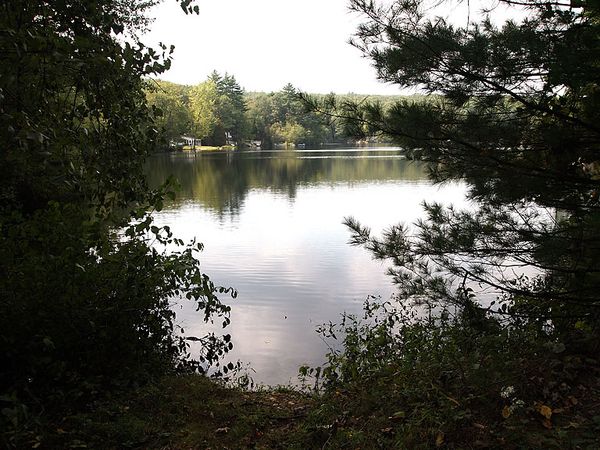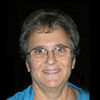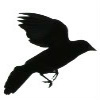RAW files
Sep 11, 2011 23:21:54 #
I have a Nikon D80 and a Nikon D200 in which I have been shooting normal jpeg. I have read that most of you suggest shooting RAW for better quality photos and editing. My cameras have RAW, RAW+JPEG FINE, RAW+JPEG NORMAL, AND RAW+JPEG BASIC. I am guessing that I need to shoot in RAW without JPEG. Any insight? Thanks in advance.
Sep 12, 2011 00:54:22 #
You can use Raw + JPEG if you wish - you will go through your memory cards even faster then Raw alone. I do shoot in Raw more then I used to, but it depends a lot on what my subject is and if I will ever enalarge the photos. For example most family get togethers and outings I always use JPEG.
Sep 12, 2011 01:16:45 #
My two cents, If you can't get your image correct and you have a screen to review your exposure, and then you try again, shooting in RAW might not help you either.
Sep 12, 2011 07:55:42 #
I started shooting jpg all the time but then found out that RAW gives me a much more data when trying to recover a photo that I under or over exposed. If you are shooting sports or continuous capture I would use with jpg. The other consideration you need to think about is your post processing Workflow. RAW files tend to have a longer workflow, but this also depends on the software you use too. I hope this helps, ADubin
Sep 12, 2011 08:12:12 #
Many "serious" photographers shoot in RAW, but then again, some do not. To me, the question of which format to use depends on some factors. The big difference between the two formats is that RAW is basically the scene as the sensor sees it, with no in-camera processing applied, hence it's name. JPG format files go through in-camera processing for color adjustment, sharpening, and compression and lord knows what else.
A RAW file allows you greater flexibility in post processing to adjust white balance, brightness, contrast, and many other facets of the image.
A RAW file must be converted and saved as a JPG or other standard format before it can be viewed by most browsers or other generic photo manipulation programs.
RAW file formats are specific to your camera brand, also. Canon RAWs are slightly different than NIKONs, which are slightly different than SONY, etc. RAW files can not be viewed directly in web browsers either, which is why you need JPG's or PNG's for posting on forums such as the Ugly Hedgehog. The software that came from your camera can help you manipulate your own RAW files as well. Canon users have the free "Digital Photo Processor" program, known as DPP.
If you do little or no post processing, you don't need to create RAW files.
RAW files are larger in size than JPGs, because, as noted, they contain all the pixels your sensor captured. JPGs are compressed and lose some (a very little, but some...) quality every time they are edited and re-saved.
Because they're smaller, when you're shooting in burst mode, you'll be able to capture more JPG images in a row then RAW. This may be a factor in certain situations.
As a side note, if you're fiddling with HDR processing, the use of RAW images obviates the need to shoot three or more bracketed images. Your raw can be adjusted to the various exposure increments in software and saved as many times as you want, or most HDR programs can take a single RAW image and manipulate it themselves.
The bottom line is that a RAW image gives you everything your camera sensor has to work with, so that you can take it and process to your little heart's content. JPG applies the camera's processing instead.
A RAW file allows you greater flexibility in post processing to adjust white balance, brightness, contrast, and many other facets of the image.
A RAW file must be converted and saved as a JPG or other standard format before it can be viewed by most browsers or other generic photo manipulation programs.
RAW file formats are specific to your camera brand, also. Canon RAWs are slightly different than NIKONs, which are slightly different than SONY, etc. RAW files can not be viewed directly in web browsers either, which is why you need JPG's or PNG's for posting on forums such as the Ugly Hedgehog. The software that came from your camera can help you manipulate your own RAW files as well. Canon users have the free "Digital Photo Processor" program, known as DPP.
If you do little or no post processing, you don't need to create RAW files.
RAW files are larger in size than JPGs, because, as noted, they contain all the pixels your sensor captured. JPGs are compressed and lose some (a very little, but some...) quality every time they are edited and re-saved.
Because they're smaller, when you're shooting in burst mode, you'll be able to capture more JPG images in a row then RAW. This may be a factor in certain situations.
As a side note, if you're fiddling with HDR processing, the use of RAW images obviates the need to shoot three or more bracketed images. Your raw can be adjusted to the various exposure increments in software and saved as many times as you want, or most HDR programs can take a single RAW image and manipulate it themselves.
The bottom line is that a RAW image gives you everything your camera sensor has to work with, so that you can take it and process to your little heart's content. JPG applies the camera's processing instead.
Sep 12, 2011 10:04:21 #
Thanks for the wealth of information, especially for the advantages and disadvantages. I have a better understanding.
Sep 12, 2011 10:08:34 #
If you want to play on the computer shoot Raw. That said. If you shoot Raw its a good idea to shoot Jpeg so that you can veiw it on your computer and then use the raw to do your thing in photoshop. If you shoot just RAW most most computers will not open your pictures - Dave
Sep 12, 2011 10:22:45 #
Great responses about the use of RAW files. I learned fom these.
Sep 14, 2011 19:58:15 #
JimH wrote:
Many "serious" photographers shoot in RA... (show quote)
Thank you so much for this info, esp. the fact that with HDR, no need to bracket your images as you can do this in RAW.
Sep 14, 2011 20:17:42 #
Today was MY first try at RAW. I decided to go with just RAW because anything else took up an absurd amount of space. I am still not convinced that all the extra steps are made up for by a significant difference in quality. But I did notice that I was able to bring up sky and water texture and detail I didn't even see originally. So maybe there is. Here's a result. Not a brilliant picture, but it's was an interesting exercise.
Manchuag Lake

Sep 14, 2011 20:22:26 #
If you have the room on your memory card, shoot in both RAW+JPEG. Now, if you're going to use only the RAW for processing, then you can set your JPEGs for a lower quality; either RAW+JPEG BASIC or NORMAL. So, now when you get home and put these puppies on your computer, you can peruse the JPEGS quicker and then work on the corresponding RAWs as you find the nuggets you like.
Sep 14, 2011 20:22:26 #
If you have the room on your memory card, shoot in both RAW+JPEG. Now, if you're going to use only the RAW for processing, then you can set your JPEGs for a lower quality; either RAW+JPEG BASIC or NORMAL. So, now when you get home and put these puppies on your computer, you can peruse the JPEGS quicker and then work on the corresponding RAWs as you find the nuggets you like.
Sep 14, 2011 22:43:15 #
Sep 14, 2011 23:51:30 #
This was all very helpful to me, too. I have been shooting in RAW + JPEG fine, but now I understand I can reduce to RAW + JPEG basic, thanks
Sep 15, 2011 06:07:54 #
New2blog wrote:
This was all very helpful to me, too. I have been shooting in RAW + JPEG fine, but now I understand I can reduce to RAW + JPEG basic, thanks
Do you have those options as well? I know that on my Canon I only have one RAW+JPEG setting (no basic or normal), the JPEG is actually the equivalent to fine. It must be native to Nikon.
If you want to reply, then register here. Registration is free and your account is created instantly, so you can post right away.








